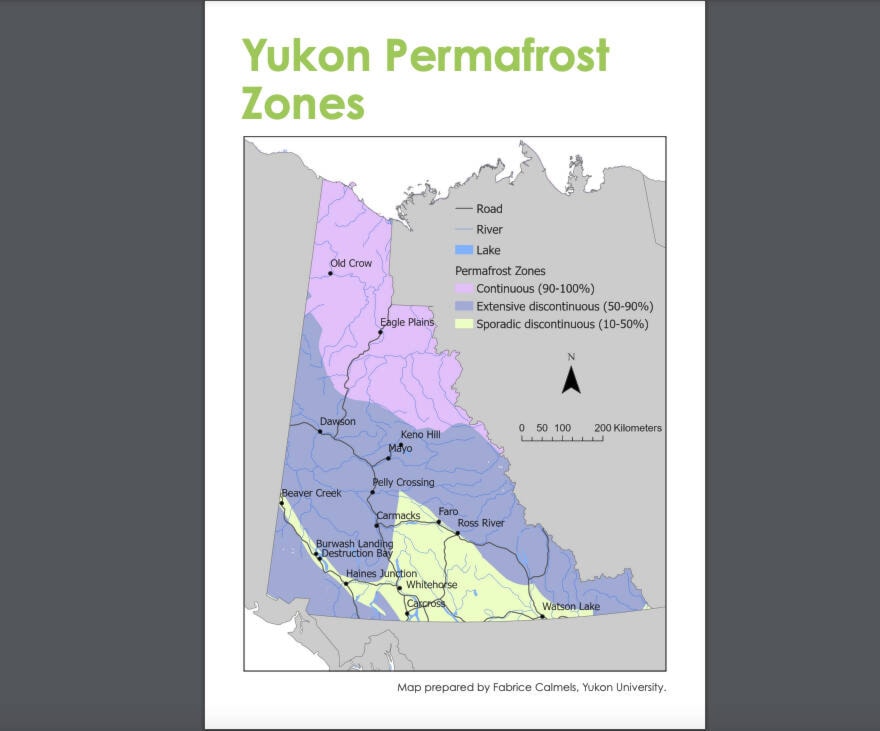A six-day conference focused on climate change in North Yukon brought together permafrost experts, First Nations and others to look at the impact of climate change in the northern part of the territory.
The North Yukon Permafrost Conference got underway in Dawson on Aug. 21 and wrapped up on Aug. 26 with closing remarks from representatives of the four co-hosts - the First Nation of Na-Cho Nyak Dun (FNNND), Tr’ondëk Hwëch’in Government (THG), Vuntut Gwitchin Government (VGG), and the Canadian Permafrost Association (CPA).
A steering committee made up of representatives from the four co-hosts came up with a schedule that included a selection of field excursions as part of the schedule along with the more typical conference fair of keynote addresses, panel discussions and so on.
The two half-day field excursions saw delegates choose between seeing the Klondike Goldfields, the Dempster Highway and the Top of the World Highway led by guides with the THG and the Yukon government. Faculty from Yukon University were also part of the Dempster Highway tour, while the University of Alberta was part of the tour to the goldfields and University of Ottawa was part of the Top-of-the-World highway excursion.
Dawson residents also took in a portion of the conference with public lectures hosted at the Palace Grand Theatre on Aug. 24. The first lecture featured Chris Burn, a professor of geography and environmental studies and graduate supervisor of Northern Studies at Carleton University in Ottawa, and Mark O’Donoghue, the northern regional biologist for the Yukon government. Their lecture was entitled ‘Animals, people and climate change in central and northern Yukon’.
The section lecture, delivered by Duane Froese of the University of Alberta, focused on the ‘Klondike ‘Cold’ Rush: Treasures in Ancient Ice’. Froese is a professor and Canada Research Chair in the faculty of science at the University of Alberta.
The event program describes it as a “unique conference” that focuses on the impact of climate change in the traditional territories of the three First Nations that partnered to co-host the event. Themes around the impacts to communities and infrastructure as well as geohazards and ways to approach adaptation were highlighted throughout the six days.
“To allow time for relationship building and small group discussions, the program is unconventional and consists of keynote presentations, panel discussions, poster presentations, half-day field excursions and evening public lectures,” it noted.
The program includes a piece written by Chris Burn, a professor of geography and environmental studies and graduate supervisor of Northern Studies at Carleton University in Ottawa. It notes the impact melting permafrost is having in the territory.
“In northern parts of the traditional territory of Na-Cho Nyak Dun First Nation, many large thaw slumps have developed in the last 15 years,” the program said.
“In this area, glacial ice was buried at the end of the last glaciation about 14,000 years ago and has recently been exposed and is starting thaw. Melting of ground ice may cause failure of infrastructure, as at km 27 of the Dempster Highway in N.W.T., again in transboundary traditional territories. Climate change has increased the number and scale of many disturbances to permafrost.”
Increasing groundwater flow, Burns continued, creates a number of infrastructure problems. Landslides have also been happening more frequently, typically happening after heavy rain or a forest fire.
“Increases in ground temperature suggest the permafrost is losing its bearing capacity as the ground approaches 0 C,” Burns writes.
Photos showing the impact - a large slump, sinkhole and cracks - along the Dempster Highway due to the changing permafrost are featured in the program as well.
The first formal sessions of the conference focused on permafrost in the region and a strategy for permafrost knowledge in the country. Field trips were held over two afternoons with other sessions and panel talks about Indigenous knowledge, land-use planning, infrastructure and mining among others.
The Aug. 26 morning sessions wrapping up the conference were focused on recommendations going forward. A closing ceremony was set for 11 a.m. with closing remarks from the chiefs of the three First Nations co-hosting the conference with the permafrost association.
Contact Stephanie Waddell at stephanie.waddell@yukon-news.com
